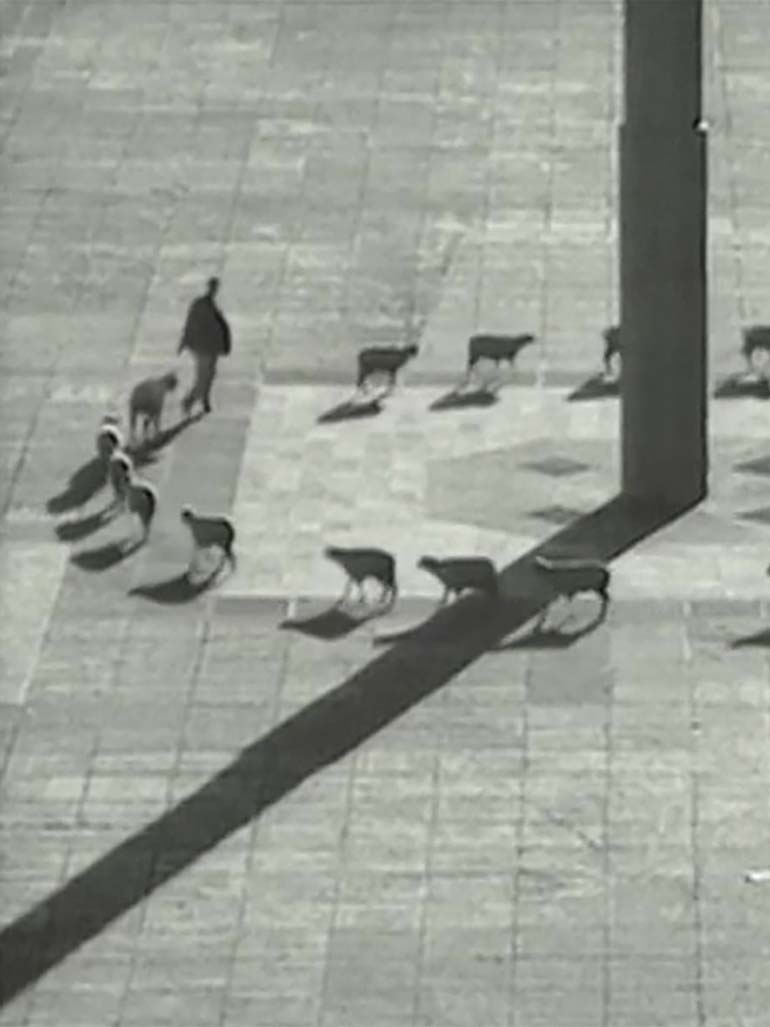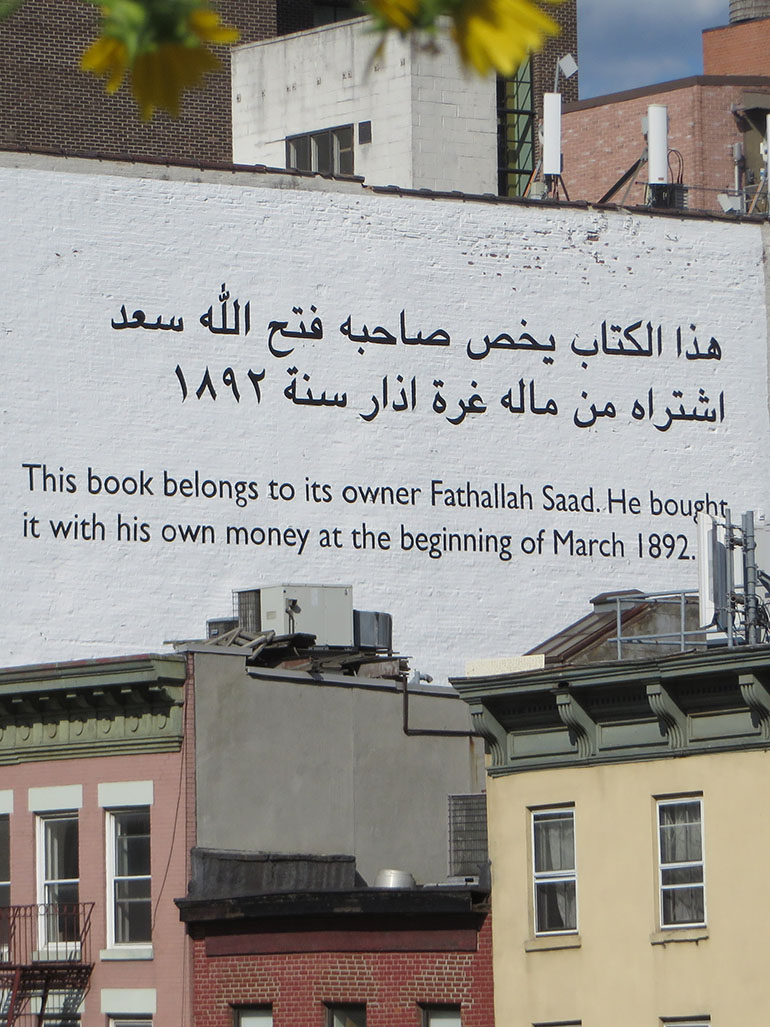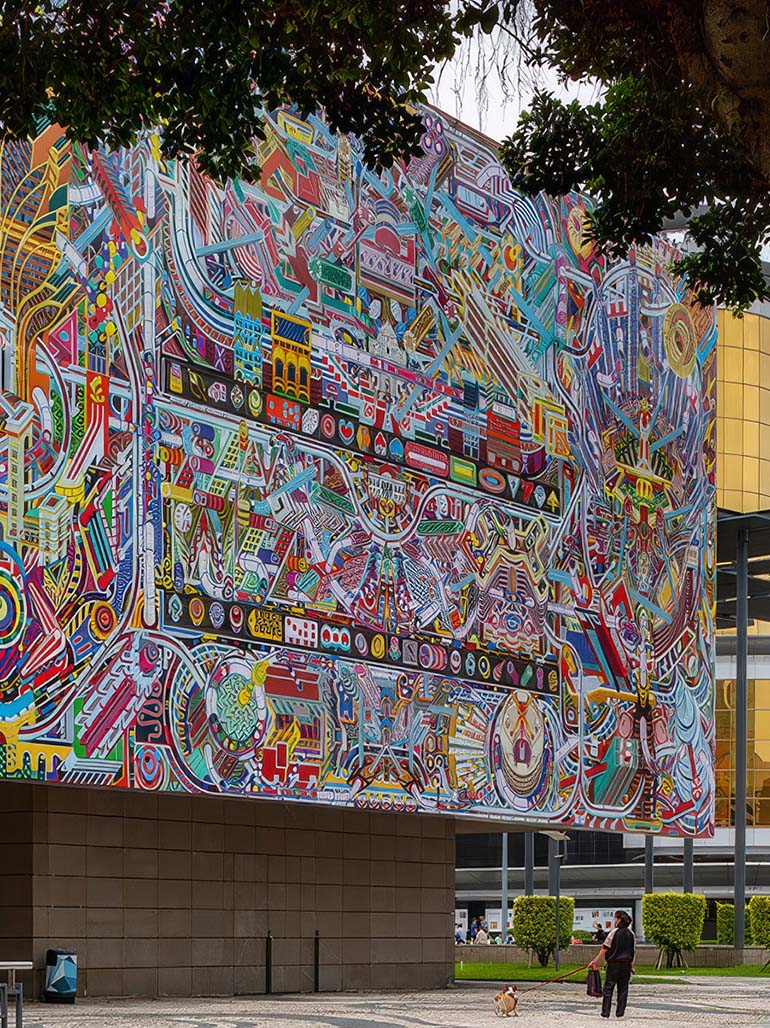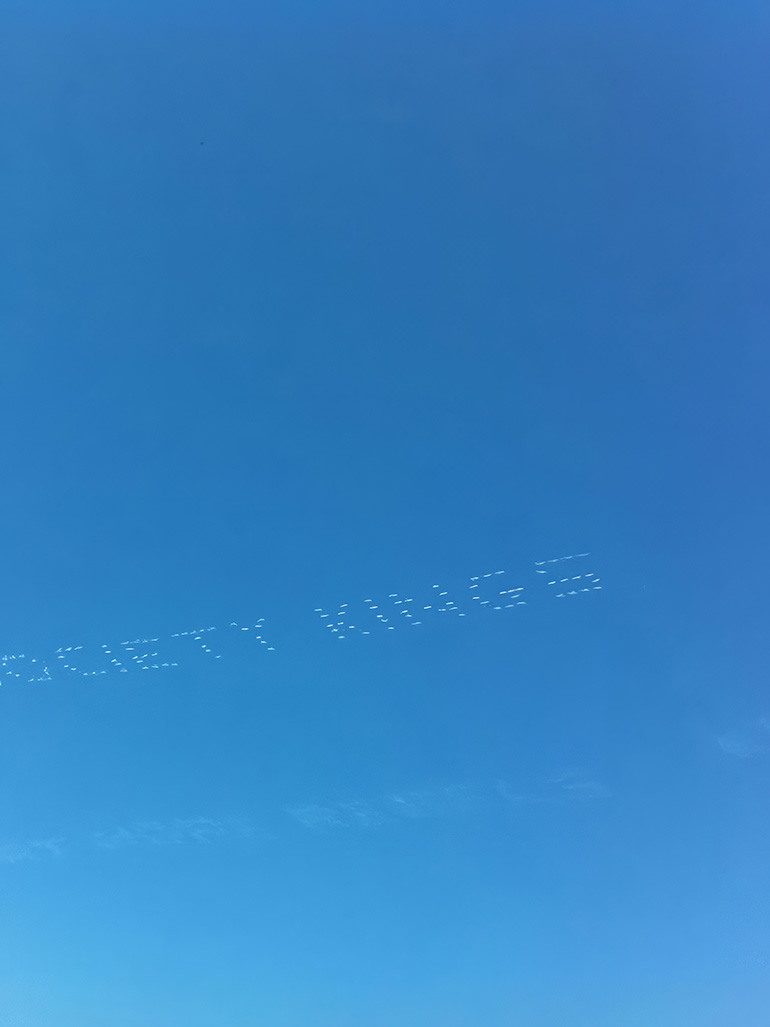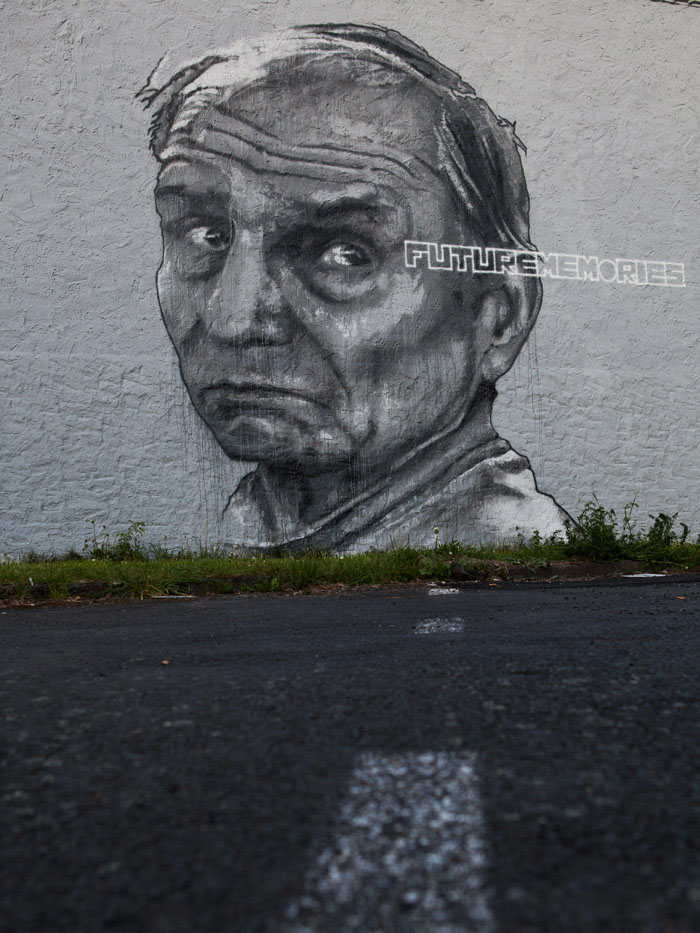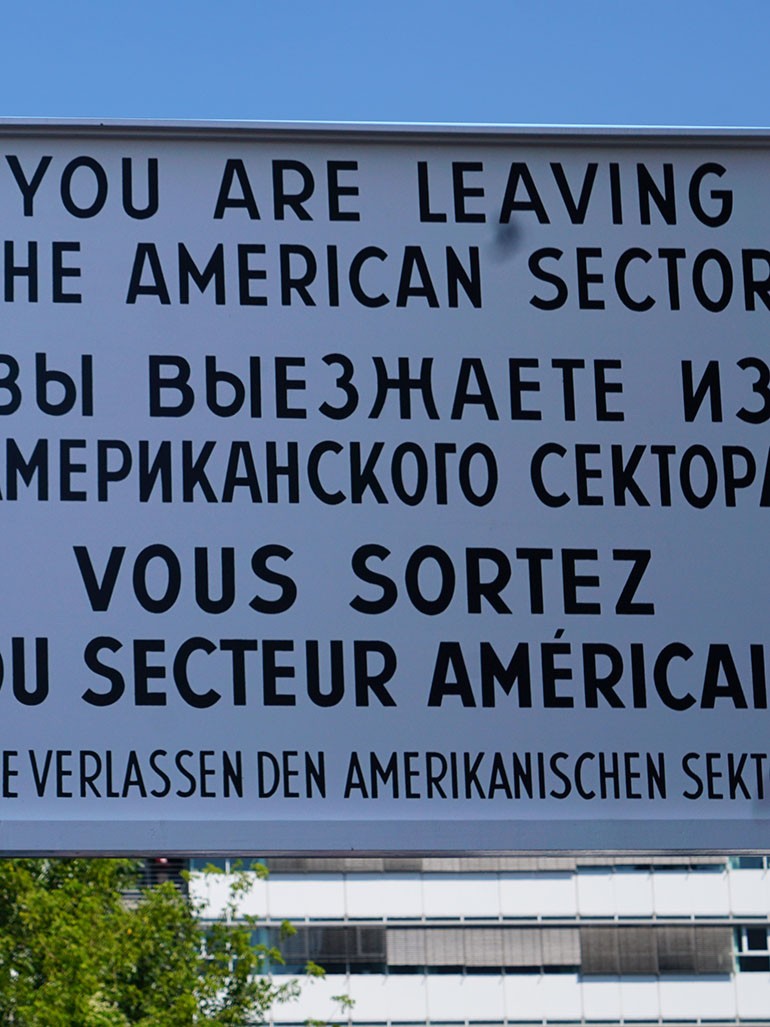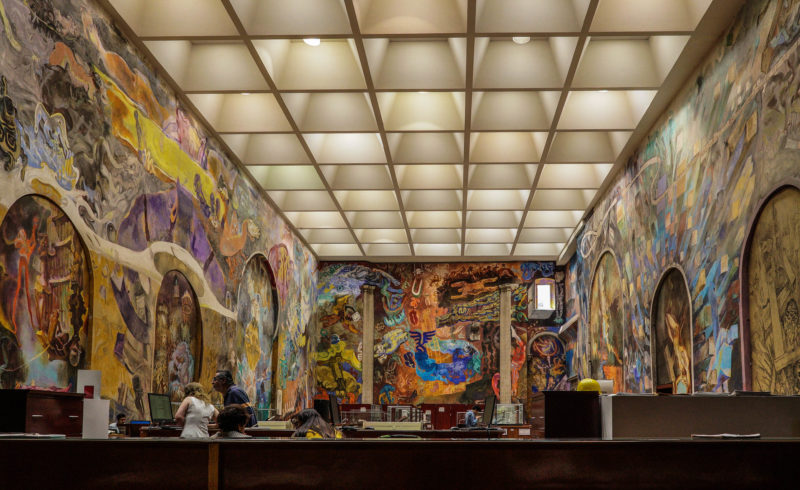
República de El Salvador 49, Centro, 06080 Ciudad de México, CDMX, Mexiko Copy to clipboard
19.429278, -99.137886 Copy to clipboard
Before you go
Admission: Free, but an official photo ID (INE, student, or teacher credential) is required to enter.
Atmosphere: The library is quiet and calm, ideal for studying or reading.
Facilities: Restrooms are available. Luggage storage is offered at the entrance, but there are no public power outlets or WiFi.
Internet: There is no public WiFi, and library computers are slow, so bring offline materials if needed.
Nearby attractions: Located near the Bellas Artes metro and surrounded by stunning architecture, including a beautiful plaza with opera singers.
Reservations: No reservations are needed, except for guided tours or special events.
Visit duration: Plan to spend 1–2 hours to explore the murals and enjoy the ambiance.
Best visit time
Weekday mornings are the best time to visit for a quieter experience, avoiding crowds.
Directions
Public transport
By bus: Take Metrobus Line 4 to El Salvador station, then walk 200 meters.
By metro: The nearest stations are Isabel la Católica (Line 1), San Juan de Letrán (Line 8), and Zócalo/Tenochtitlan (Line 2). Each is approximately a 500-meter walk.
Parking
There is no dedicated parking; consider using nearby public parking lots.
What is it?
The Miguel Lerdo de Tejada Library is an impressive feat of architecture 1, but even more impressive is its large-scale 2 mural 3, covering 2000 square meters. The library, one of Mexico’s 4 most important resources for financial records and heritage book collections, houses psychedelic frescoes that tell the story of revolutionary scenes throughout history.
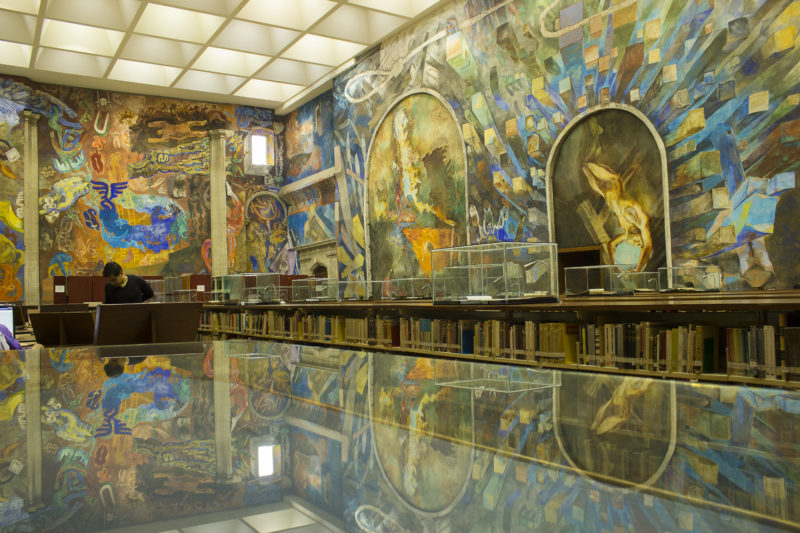
Mexicans love their murals and they are used to decorate public buildings. As such, it is no surprise that the library is also adorned with a magnificent mural. The mural painted by Jewish/Russian/Mexican muralist Vlady Kibalchich Rusakov 5 (1920-2005), known as Vlady in Mexico, is a representation of his particular style, which was a reinvention of the muralismo movement in Mexico.
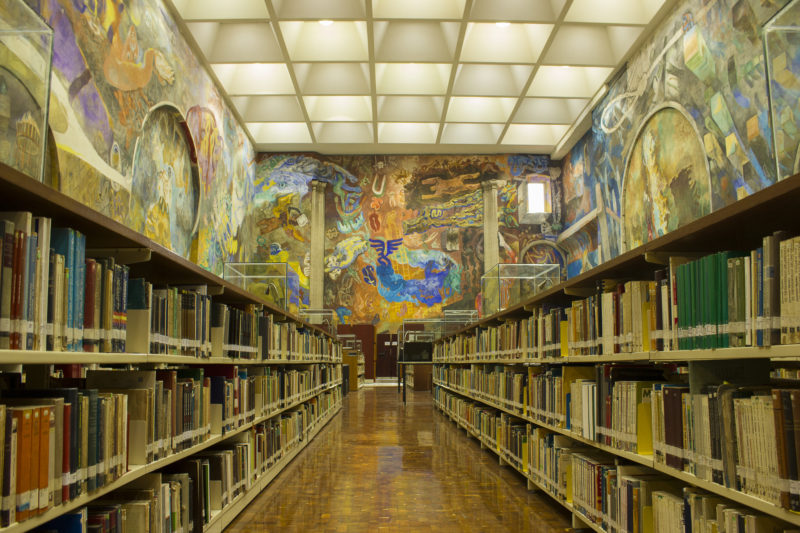
Vlady was inspired by fluid rhythms, Venetian colors, stark precision and Hieronymus Bosch (1450-1516), which made his mural art very unique at the time.
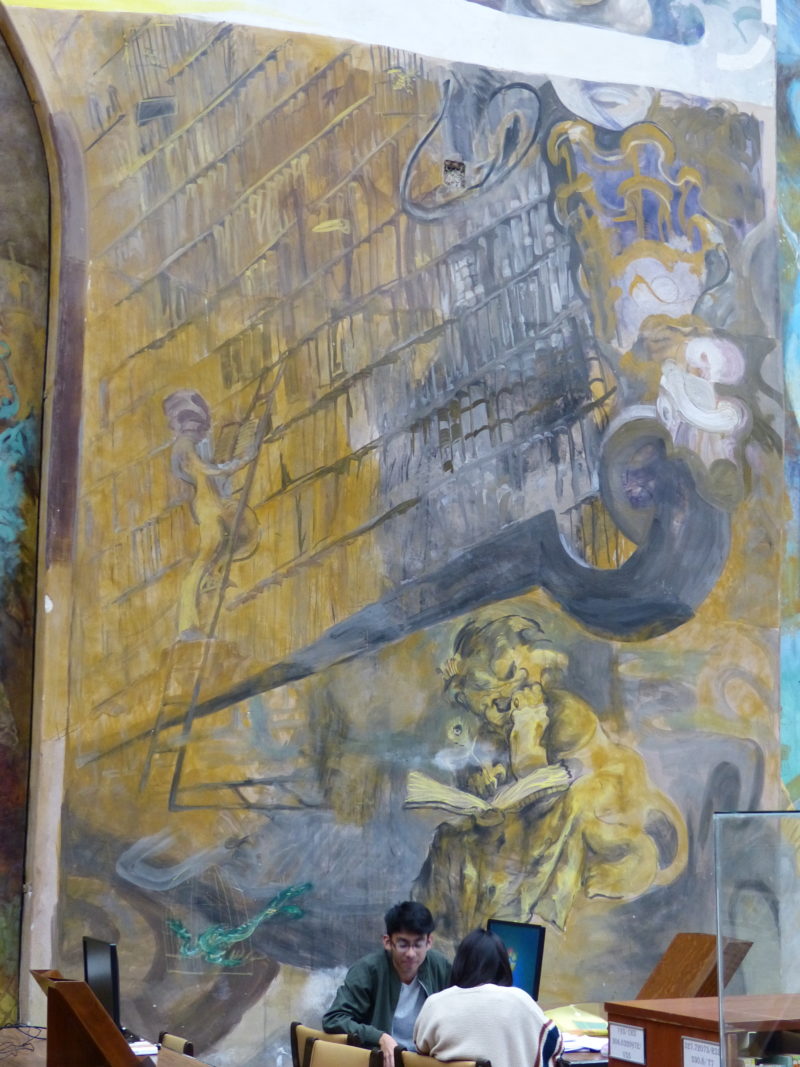
Brief history
The Miguel Lerdo de Tejada Library is located in what was formerly the Oratory of San Felipe Neri, a 17th-century church in Mexico City 6. Its murals were appointed by then Mexican president Luis Echeverría Álvarez in 1972 and Rusakov worked on them for about ten years.
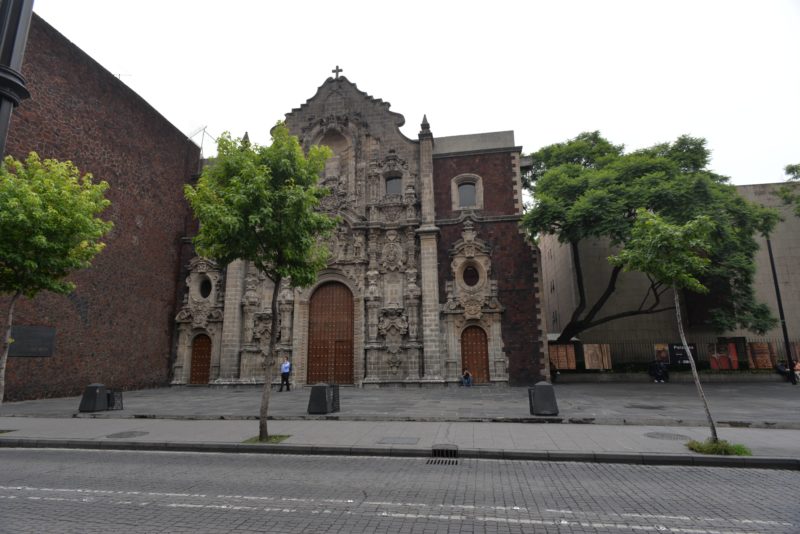
The frescoes were mostly executed on the wall while the arches of the gates were painted on, with other works installed in a mezzanine. Rusakov, inspired by his many experiences and interests, did not limit the painting to Mexican art but also touched on international historical events.
Indeed, he also included the Freudian Revolution, which is the 20th Century sexual revolution. With revolution at its heart, the mural is called Las revoluciones y los elementos, which means The revolutions and the elements. Vlady later called the work my revolutionary Sistine chapel 78.
The Murals
When Vlady started to work on the murals, he began with the chapel. He painted a psychedelic mural depicting Freud and the sexual revolution before exploring other revolutionary movements from America, France, and Russia.
What made his murals astonishing was not just the revolutionary ideas depicted but also the textured details. It was an undertaking that took ten years and the colors, references, revolutionary figures and swirling forms are an impressive sight.
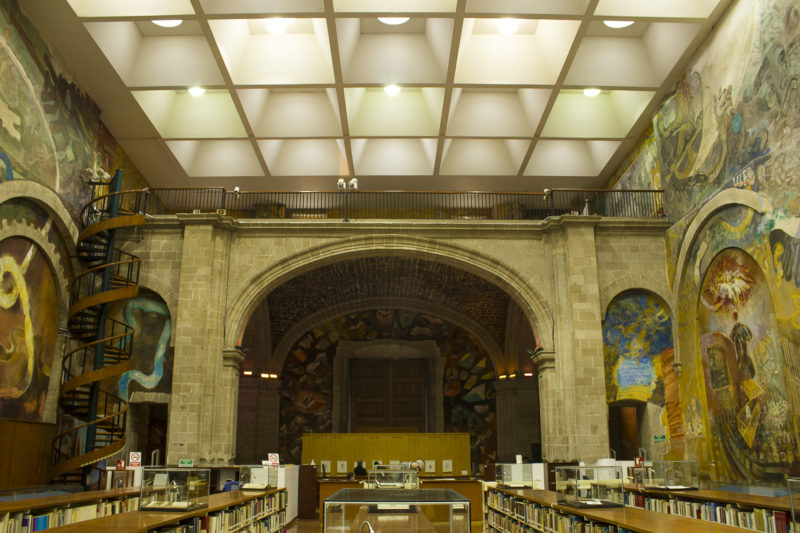
The artwork consists of four panels. Right from the entrance and further into the building are depictions of Falling Angel, a nude human male figure falling from blue heavens with wings drooping to the ground.
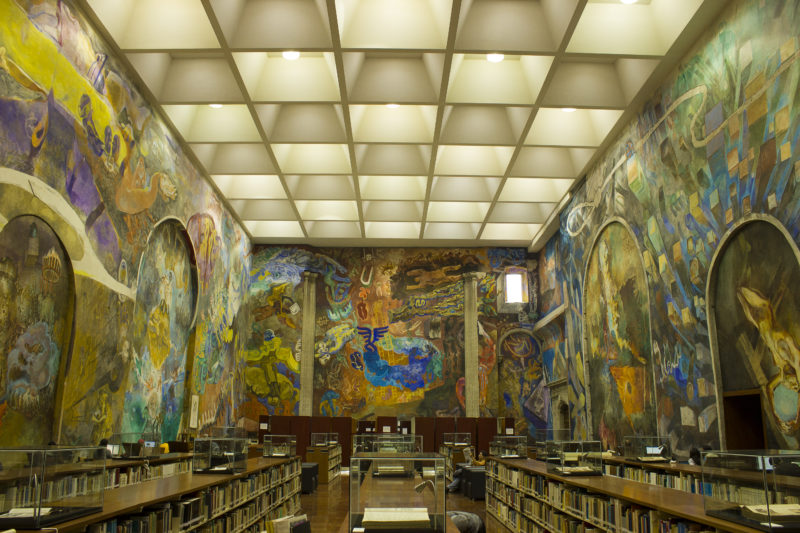
The East left wall features the Cromwell English Revolution followed by the Musical Revolution, the French Revolution and finally Latin American Revolutions. On the Western (right) wall, Vlady painted scenes showing the American Revolution, the Christian Revolution and the Russian Revolution.

Finally, on the South Wall that bridges the East and West walls, Vlady depicted a triptych that sums up the outcome of all the revolutions. This triptych is a recall of Hieronymus Bosch’s Last Judgement with its archetypical and Biblical images.
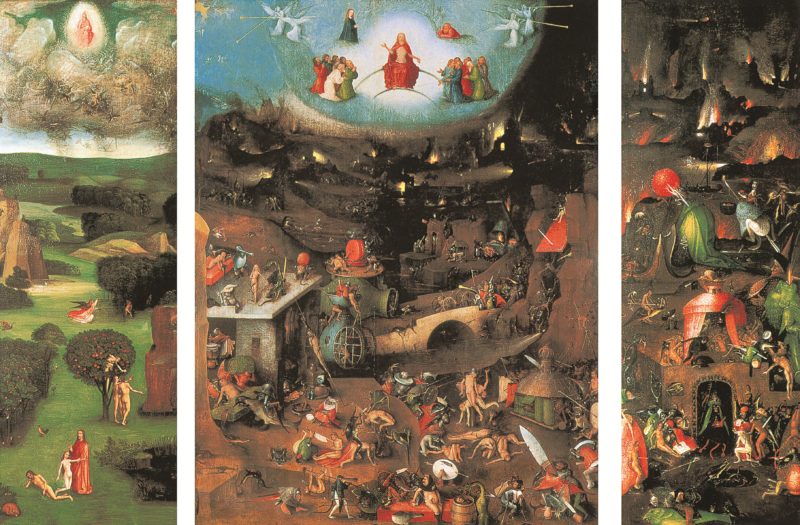
Completion
The panels were finally inaugurated in 1982 by President José López Portillo. The murals are in good condition. The library was renovated several times in the 2000s to keep moisture and other damaging elements out of the interior.
In the book Vlady. Revolutions and Elements the artist said 910:
I wanted to make frescoes. A fresco is very difficult. It is the original form of painting. Everything that fixes color is there. On the wall, you no longer erase it. When I got down to work, a very strange, perhaps novel conception of the fresco came out. I believe that here there are a hundred different ways to paint with impossible colors that hold up better than the old ones. They are thirty years old, you can tell.
Final words
All in all, according to Vlady, the rebels are humans and throughout history, they have rebelled against the powers-that-be. However, revolutions often end in failure because humans tend to gravitate towards unchecked power and acquire arrogance.
Is there hope for people fighting for enlightenment and better governance? That is the question that the murals pose to viewers.
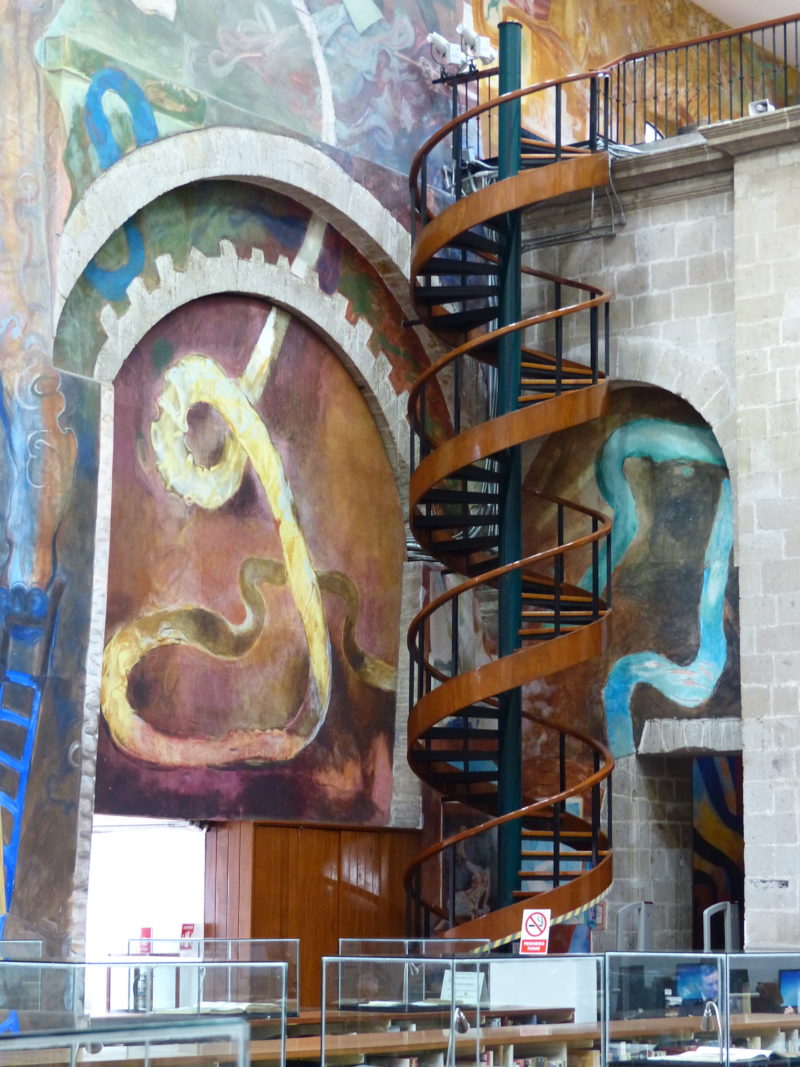
Explore nearby
Mexico City, Mexico
 Francis Alÿs had sheep march in patriotic talesPerformance ended (staged in 1997)1 km away
Francis Alÿs had sheep march in patriotic talesPerformance ended (staged in 1997)1 km away Francis Alÿs pushed an ice block for 9 hoursPerformance ended (staged in 1997)4 km away
Francis Alÿs pushed an ice block for 9 hoursPerformance ended (staged in 1997)4 km away
 Torres de Satélite by Luis Barragan13 km away
Torres de Satélite by Luis Barragan13 km away

